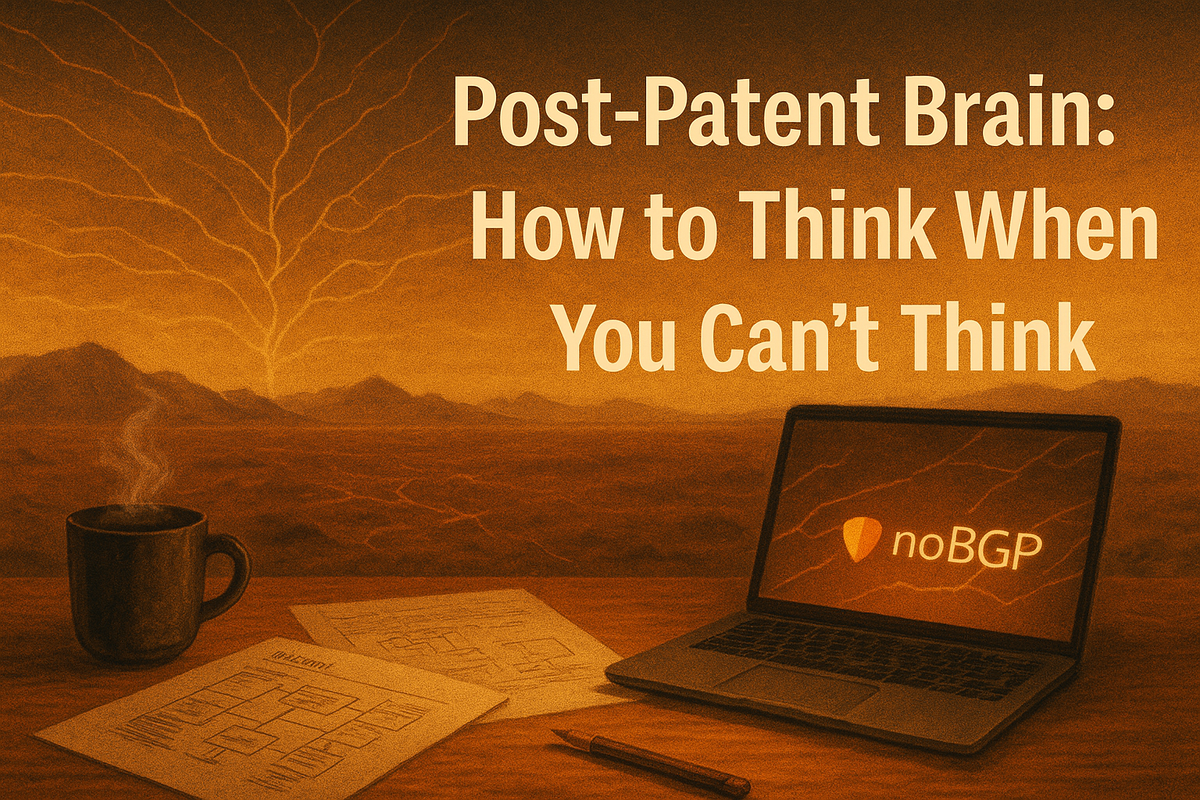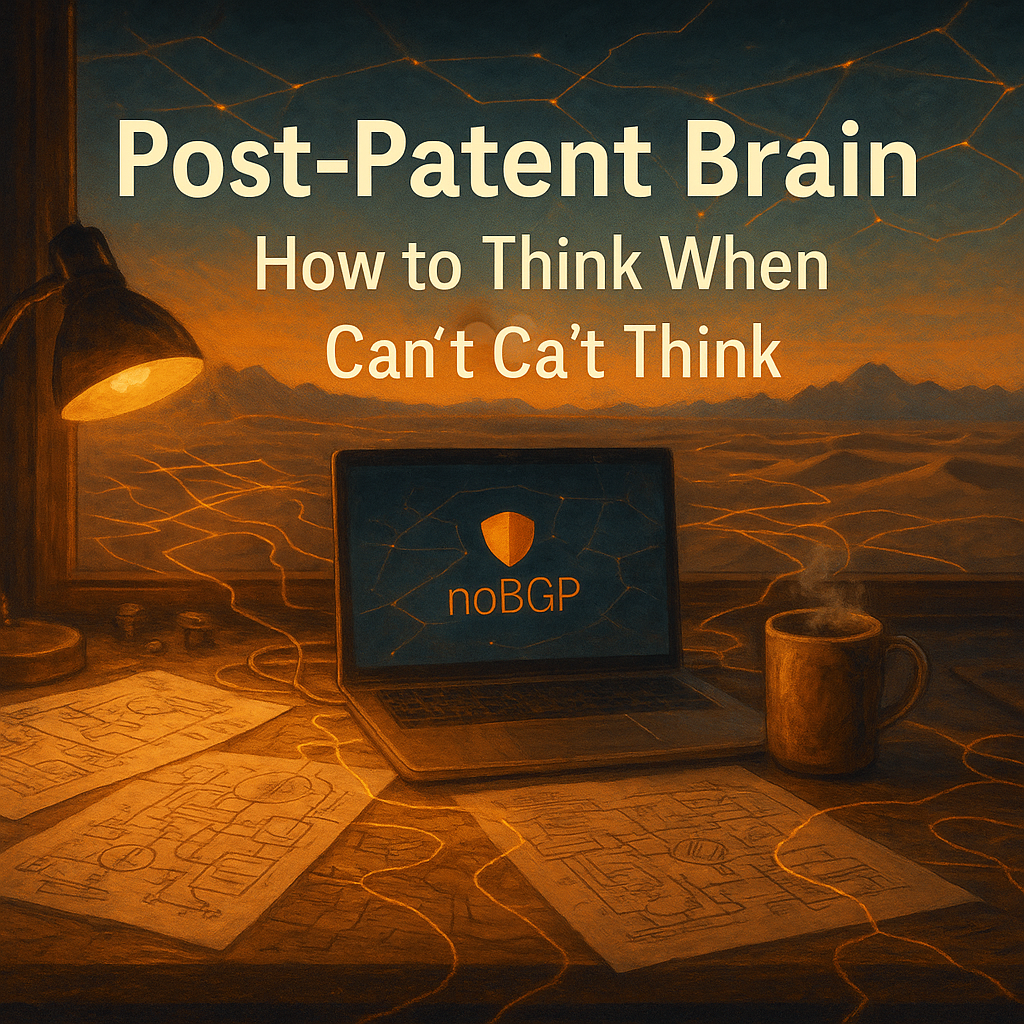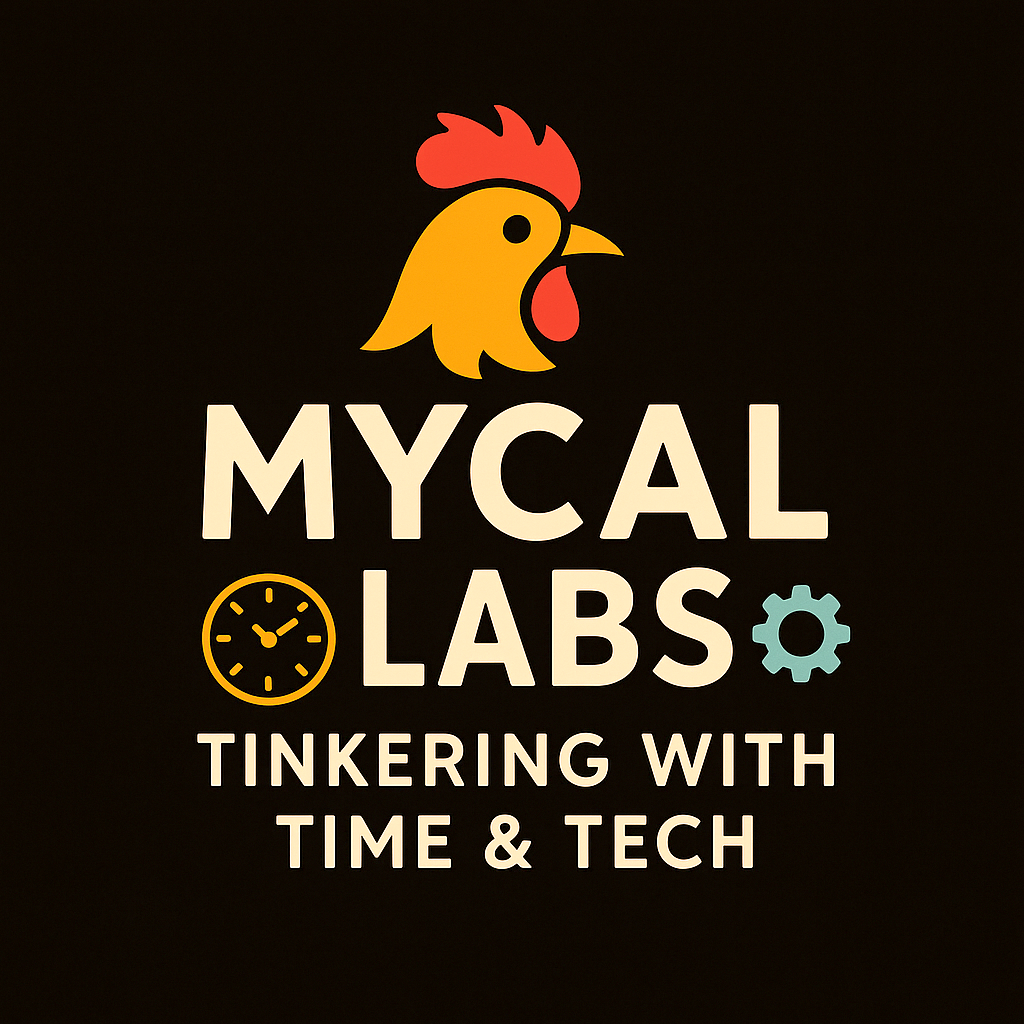Post-Patent Brain: How to Think When You Can’t Think
After filing NoBGP patents all week, my brain started throwing stack traces. There’s a static that hums in your skull when imagination has to speak USPTO. You stare at your coffee like it’s prior art and wonder if the cure for Novelty Compression is caffeine or a reboot.

Tinkering with Time, Tech, and Culture #20
After filing NoBGP patents all week, I discovered a new form of mental latency — the fog that forms when imagination is forced to speak USPTO.

There’s a special kind of static that hums in your skull after you file a patent. It’s not quite exhaustion — it’s like your neurons are still buffering, trying to reboot into human language after a week of speaking USPTO.
You look at your coffee and wonder if it’s patentable. You try to think a normal thought and your brain whispers: “Obvious under §103.”
Welcome to Post-Patent Brain — that liminal space between invention and bureaucracy, where even your imagination needs prior approval.
The Five Stages of Filing
1. Denial
This one’s simple. It’s just NoBGP — but smarter.
You tell yourself this while outlining “a system and method for frictionless AI-programmable compute and control.” Four hours later, your diagram has seventeen arrows labeled intent surface and you’ve entered the quantum phase of flowcharting.
Your morning standup now requires independent claims.
2. Drafting
Just describe what remote.it did, but more 2025.
You start typing sentences like:
“An apparatus configured to dynamically instantiate micro-brains within authenticated overlay networks.”
You pause to wonder if the sentence describes software or theology.
Every shower thought now comes with an automatic 20-year term.
3. Doubt
Have I invented this before?
You search your own patent history. There it is: 2010. “Remote access system for device-to-device communication.” Filed. Granted. Archived.
Now reincarnated — with AI, websockets, and a vengeance.
You’ve become your own prior art. The existential horror sets in: you’ve been reinventing the same idea across three decades, each time convinced it’s revolutionary.
You’re not building on the shoulders of giants — you’re building on the shoulders of yourself, age 32, who was building on yourself, age 24.
4. Diagrams
Salvation through rectangles.
You open draw.io, connect boxes labeled “LLM,” “MCP,” and “Human.”
It looks profound, but also suspiciously like a smart toaster.
Here’s the secret they don’t tell you: at a certain level of abstraction, all network diagrams are identical. Consciousness, coffee machines, the internet — they’re all just boxes with arrows.
Maybe that’s the real invention. Maybe the smart toaster is the topology.
You keep it anyway.
5. Doomscrolling
The vigil.
You hit “Submit,” then immediately search Google Patents for “intelligent overlay network.” You find one from 2004 titled “Apparatus for Facilitating Peer-to-Peer Caffeine Distribution.”
You close the tab. Not this time.
Novelty Compression Syndrome
Then comes Novelty Compression — that mental flattening when your imagination has been forced through the language of claims and clauses. Every idea gets filed, numbered, and notarized in your head.
Even your inner monologue starts sounding like this:
“A method for rehydrating organic matter via controlled application of heat to an edible substrate.”
You’ve started citing prior art in arguments with your spouse.
You’ve become your own patent examiner.
Your dreams are cross-referenced.
Your creativity now responds to FOIA requests.
Re-Expanding the Mind
The cure isn’t sleep. Sleep just reboots the claim-drafting daemon.
The cure is nonsense.
Touch some wires that aren’t labeled eth0.
Play guitar until your cortex forgets what “MCP” stands for.
Talk to someone who doesn’t know what an overlay network is.
Run a private tunnel to your subconscious.
SSH into your daydreams.
Forward port 42 to the part of your brain that still believes in impossible ideas.
That’s the real NoBGP principle: remove the friction between thought and creation — no routing tables, no gatekeepers, no permission slips.
Just intent, instantiated.
The Whimsical Afterburn
Invention never really stops.
The remote.it era taught me how to connect things.
The NoBGP era? It’s about connecting everything else — compute, creativity, and consciousness — into a seamless, programmable fabric that dreams in its own protocol.
But tonight, as my neurons unspool, possibly after running modified code, and my syntax starts to sound human again, I have a simpler goal:
My next invention will be a coffee that files its own patents.
A coffee that cites its own prior art (yesterday’s cup), automatically generates continuation applications every time you add cream, and submits defensive publications when you pour it down the drain.
Preferably before I finish drinking it.
Patent pending. Obviously.
